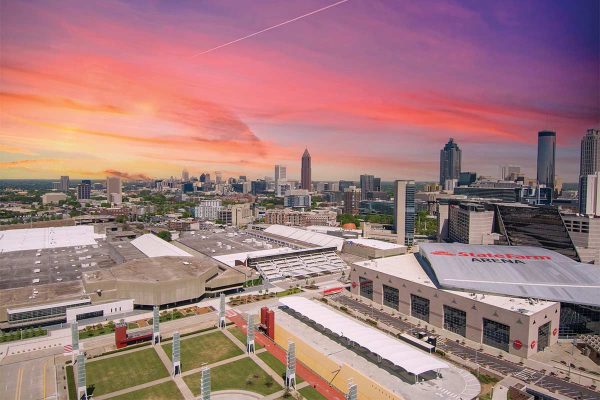It is said that what doesn’t kill us makes us stronger. Numerous catastrophic events have occurred throughout the history of the exhibition industry – fires that marred Chicago’s McCormick Place and Detroit’s Cobo Hall, hurricanes and tornadoes striking tradeshows, terrorist attacks against a nation, a crippling economic recession. Yet these buildings have come back stronger and more ready to face the world than ever before. The people whose lives and businesses were affected by such calamities have grown more resilient and determined to better the industry in the face of tragedy.
These countless defining moments serve as a reminder that the exhibition industry can endure just about anything. Tradeshow professionals, exhibition firms and industry associations have come together in these times of need to help each other overcome, conquer and thrive through it all, not just survive it.
In the face of one particularly heart-wrenching tragedy, the terrorist attacks of 9/11, the entire exhibition industry came to a brief halt. New York’s Jacob K. Javits Convention Center suffered the hardest when it had to forego all business and serve as a triage center during the unexpected and unthinkable act of terrorism. The midtown Manhattan facility acted as a place of refuge and recovery, and stood as a beacon of hope for its community.
Finally able to host events again at the beginning of the following year, Javits slowly recovered, along with the rest of the industry. Rather than simply moving on, events like 9/11 have actually brought improvements to the world of tradeshows and exhibitions with sturdier building constructions, more unified workforces and an overall sense of community among members of the industry.
This preview of our 20th anniversary edition of Exhibit City News is dedicated to those who saw a silver lining and learned how to thrive after tragedy.
PREVIEW
Post 9/11 convention center security and safety changes
By Douglas Ducate with contributions by Larry Arnaudet and Frank Poe
Our industry as we know it today was born some 40 years ago. It has shown a remarkable resistance to decline and an amazing resiliency for bounce-back recovery — even from an event as horrendous as 9/11.
The terrorist attack on America on Sept.11, 2001, had a profound effect on people and businesses all over the world. The meeting and exhibition business felt the impact immediately.
With the shutting down of air travel, those attending events at the time could not get home. Organizers had to decide whether to keep their events open or close. Events scheduled for the following week were cancelled, and of course, the events booked in Javits had to find new venues and set new dates. Some events did not try to reschedule and just skipped 2001 much like the Ryder Cup [golf] matches did.
As was borne of the McCormick Place fire of 1967, 9/11 prompted an array of security reviews by organizers, contractors and facilities.
The organizer emphasis was on attendee-access control. As other controls were considered, a number of factors came to the surface that weren’t previously considered.
First among those is that convention center safety codes are designed to ensure people can get out — not to control people getting in like a theatre or sports arena. Convention centers are more like department stores with exit-site rules, linear feet to exits and panic hardware on doors.
Likewise, the movement of exhibit materials into the building over freight docks and through drive-in doors creates a porous environment, making it difficult to control access. Possible solutions, such as uncrating materials in a staging area outside the convention center, were deemed to take too much time and were too costly.
The Exhibition Service Contractors’ Association (ESCA) continues to monitor the situation and look for ways to improve security. In 2009, in part as a result of 9/11, ESCA launched a Worker Identification System (WIS) that can be implemented by convention facilities. It provides positive identification, including a photo ID for all workers to be an addition to whatever security programs the event organizer may have in place.
In the post 9/11 environment, each venue type considered a number of items for inclusion in the best practices document. An extensive list of items included establishing single points of entry where possible to check contractor employees working on a tradeshow and the use of bomb dogs to patrol exhibit halls during setup.
Convention centers and the events they host are frequently at the center of most major disasters. The lessons learned from 9/11 were helpful in dealing with Hurricane Katrina. And the lessons learned from the huge evacuation of New Orleans were helpful in 2008 when Hurricane Ike hit the Texas coast. In both cases, convention centers in Houston and Dallas became residences for displaced refugees. Events will always step aside to help those with a greater need.




























